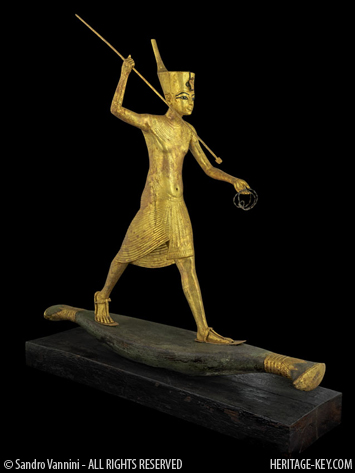 The Nelson-Atkins Museum of Art in Kansas City has just opened a new Egyptian gallery that features the coffin, cartonnage and shabtis of an Egyptian noblewoman who died around 2,300 years ago.
The Nelson-Atkins Museum of Art in Kansas City has just opened a new Egyptian gallery that features the coffin, cartonnage and shabtis of an Egyptian noblewoman who died around 2,300 years ago.
Her name was Meretites which means beloved by her father. Her funerary artefacts date to some point between 380-250 BC. This date means that she may well have been contemporaneous with Alexander the Great and witness to a remarkable period of Egyptian history.
Alexander the Great advanced into Egypt in 332 BC, taking over power from the Persians. He would go on to conquer an empire that stretched from Macedonia to the modern day India-Pakistan border. After his death in 323 BC a power vacuum ensued.
His generals battled over who would control his empire and in the end it was divided up. Ptolemy I Soter became the ruler of Egypt, starting a dynasty that continued until the suicide of Queen Cleopatra in 30 BC.
The Nelson-Atkins Museum acquired the coffin and shabtis in 2007. They are believed to have originally been from somewhere in Middle Egypt. Artefacts no longer leave Egypt on a permanent basis so these objects were certainly discovered many decades ago.
A Beautiful Coffin
The coffin is well preserved and shows some beautiful imagery. The outer coffin is eight feet long and the inner coffin is seven feet long. There is no mummy inside of it.
Both the inner and outer coffins are painted with elaborate images meant to ensure the resurrection of Meretites: Nut, the sky goddess, who boldly outstretches her wings to protect Meretites; chattering baboons that raise their arms in adoration of the sun; and Egyptian dung beetles that push the great solar disk through the heavens. Each figure, each color and each hieroglyph follow a formula intended to allow entry into the afterlife, said the museum in a news release.
In addition to the coffin the museum has 305 shabti figurines that would have accompanied Meretites. Shabtis are miniature figures that were created to do the work of the deceased in the afterlife. The museum also has cartonnage meant for the head of Meretites.
Museum curator Robert Cohon, who is in charge of ancient art at the museum, was ecstatic at being able to exhibit allthese artefacts. Our visitors especially families and kids are going to be wowed by the power and presence of the coffins, he said in the release. The coffins were virtual reincarnation machines that were absolutely necessary for the deceased to enter the afterlife.













